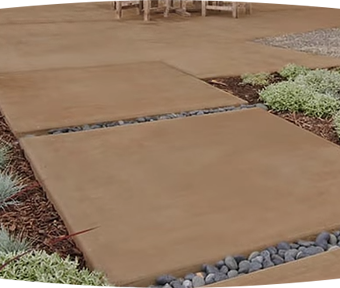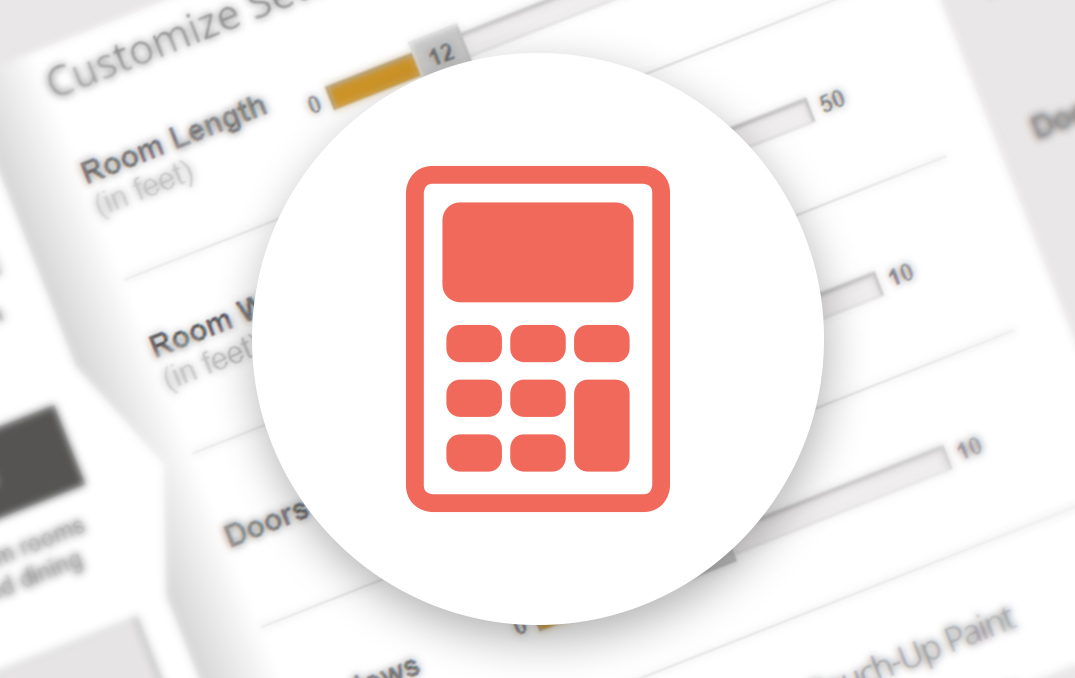
Preparation of Coated Surfaces for Semi-Transparent Concrete Stain
A great looking finish begins with the right start. Following the proper prep procedures will dramatically affect the look and longevity of your finished project.
For Best Results:
Refer to the how-to below for expert guidance on preparing your coated concrete surface.
For your safety, wear protective clothing, eye goggles and acid-resistant rubber gloves and footwear.
- Bucket
- Broom (Stiff Bristle)
- Brush 5.1 - 6.4 cm (2"-2½")
- Bucket Grid
- Chemical Resistant Gloves
- Extension Pole
- Hose
-
High Pressure Nozzle
- Mop
- Paint Can Opener
- Paint Tray
- Paint Tray Liner
- Protective Apparel
- Pump Sprayer
- Rags
- Roller Cover
How to Strip Paint from a Coated Surface
-
Step 1
Before you start, make sure the surface is clean. Wipe off excess oil and grease spills from the concrete surface. Scrape and sweep away dirt and loose contaminants from the surface.
-
Step 2
Apply a thick layer of a concrete paint stripper to the surface by using a paint brush or bristle broom. Distribute evenly.
TIP: The paint stripper thickness should be such that the previously coated surface is completely covered. The penetration of the paint stripper will vary according to coating type, thickness and temperature.
-
Step 3
Most coatings take between 1-6 hours to lift. Check periodically during the waiting period to ensure that the coating is completely covered with the paint stripper. If the coated surface becomes visible again, re-apply a light coat of paint stripper. It should remain wet and active until the coating wrinkles.
TIP: If hot or windy conditions cause drying, re-apply the paint stripper. The paint stripper will wrinkle when the job is done.
-
Step 4
Use a scraper or pressure washer to remove all coating and residue. Rinse thoroughly with water to remove all chemical residue before re-coating. Prevent all rinse solution from entering storm drains.
How to Clean and Etch a Concrete Surface
-
Step 1
Use a cleaner and etcher product to clean your concrete surface. Use a plastic watering can to evenly distribute the product.
-
Step 2
Spread the cleaner & etcher using a stiff bristled, non-metal brush or broom. Allow the product to remain on the surface for 10-20 minutes then scrub vigorously using the broom.
TIP: For best results, apply the cleaner and etcher to a dry surface.
-
Step 3
Ensure the cleaner and etcher does not dry on the surface. Lightly mist the surface with water, if needed, to keep it wet.
TIP: Heavily stained areas, older stains or dense, smooth finishes may require additional applications.
-
Step 4
Thoroughly rinse the concrete surface with clean water using either a garden hose with a high-pressure nozzle or a pressure washer. Prevent all rinse solution from entering the storm drains.
-
Step 5
The surface is ready for priming when it feels like medium-light grit sandpaper and no residue or loose concrete remains. Excess residue may interfere with the adhesion of the coating. Check for dust or powder on the surface by wiping your hands over the surface. If residue is visible on your fingers, repeat the rinsing step.
How to Prime a Concrete Surface
-
Step 1
Once the surface is cleaned and etched, apply the bonding primer to enhance adhesion. Apply using a high-quality pump sprayer, 6.4 - 9.5 mm (1/4 - 3/8") nap roller, nylon-polyester brush or pad applicator.
-
Step 2
The bonding primer will dry to the touch in approximately 2 hours. Use the bonding primer when air and surface temperatures are between 10 - 32 degrees C (50-90 degrees F). Wait at least 4 hours but before 30 days to apply the topcoat.
The surface is now ready for the topcoat.TIP: Clean up with a commercial brush cleaner.

PAINT AND STAIN CALCULATOR
Inside or outside; paint or stain: Let’s figure out how much you’ll need to make amazing happen.
Calculate
ASK AN EXPERT
Every project is unique: Keep small wrinkles from becoming big problems by letting the Behr Technical Experts lend a hand.
Get Expert Help
COLOUR STUDIO
So many colours and so many ideas: Visit Behr’s Colour Studio for inspiration, colour tools, design advice and everything you need to find your project’s perfect colour.
Colour Studio Back to Floor Coatings How-To
Back to Floor Coatings How-To



